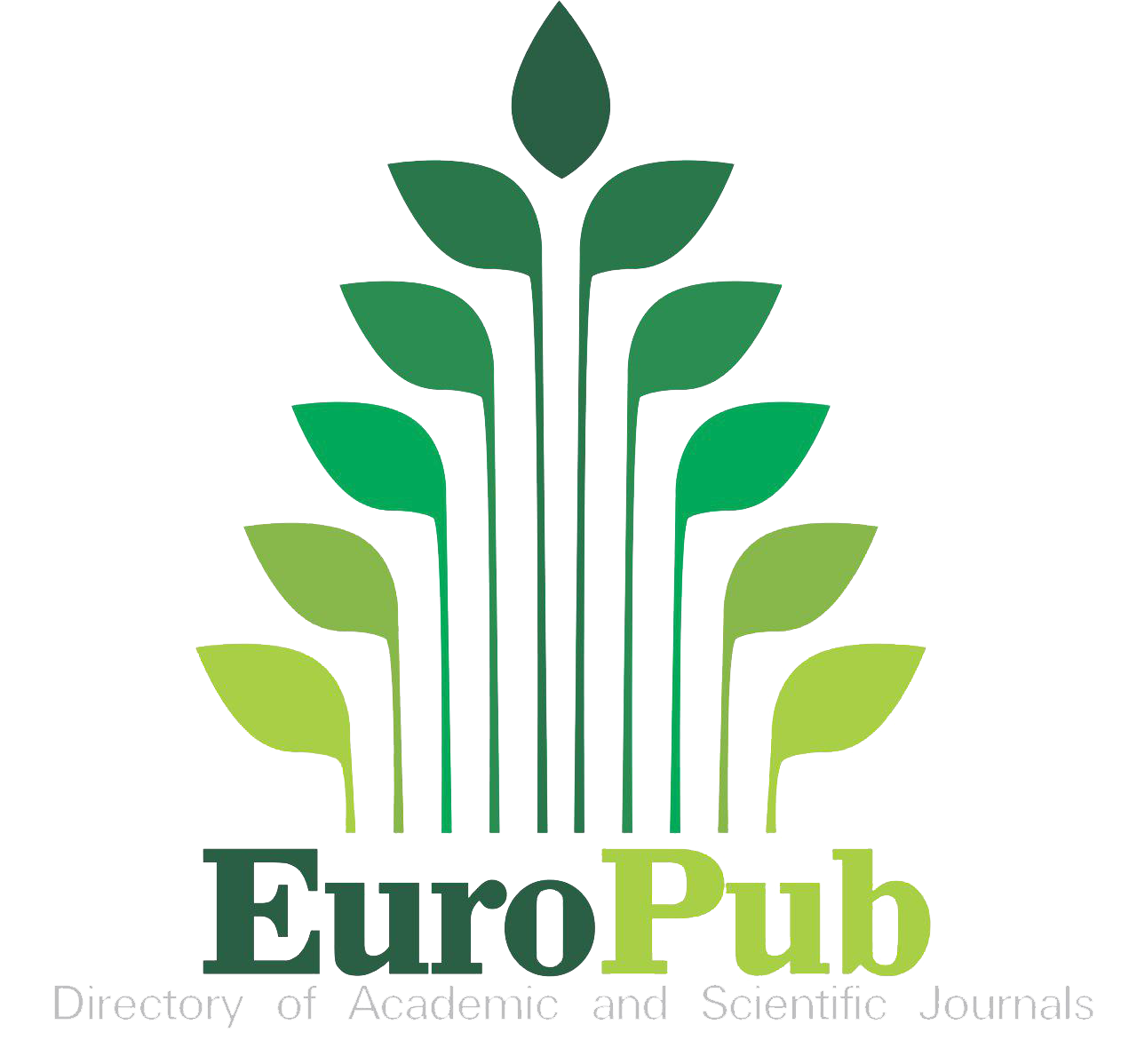Understanding Farmers’ Perceptions and Factors Determining the Adoption of Good Agricultural Practices: Evidence from the Cashew Nut Production in Côte d’Ivoire
DOI:
https://doi.org/10.54536/ajfst.v4i1.4173Keywords:
Adoption, Cashew Nuts, Good Agricultural Practices, PerceptionAbstract
Côte d’Ivoire, the world’s leading cashew nut producer with 1,200,000 tons in 2022, faces low productivity of raw cashew nuts (350-500 kg/ha) due to limited adoption of Good Agricultural Practices (GAP). The objectives of this study are to examine the relationship between producers’ perceptions and the decision to adopt good agricultural practices, and to determine the determinants of the intensity of adoption of good agricultural practices. Probit and Poisson regression models were applied to data collected from 845 cashew producers in Cote d’Ivoire. The results show that training and access to extension services influences the adoption of good agricultural practices. The average adoption scores showed that the most widely adopted good agricultural practices were plot preparation, direct seeding, formation pruning, firebreak strips, thinning, and pruning. Estimates from the probit model show that producer training on cashew technical itineraries, producer supervision by extension services, and producer perceptions are the main factors that determine the adoption of good agricultural practices. The estimates of the negative binomial model show that gender, level of education, social origin, training, and access to extension services favor the adoption of several good agricultural practices. Policies should prioritize expanding training programs and strengthening extension services to enhance the adoption of Good Agricultural Practices among cashew-nut producers and improve cashew production yield.
Downloads
References
Adegbola, P., & Gardebroek, C. (2007). The effect of information sources on technology adoption and modification decisions. Agricultural Economics, 37(2007), 55-65.
Adesina, A. A., & Baidu-Forson, J. (1995). Farmers’ perceptions and adoption of new agricultural technology: evidence from analysis in Burkina Faso and Guinea, West Africa. Agricultural economics, 13(1), 1‑9.
Adesina, A. A., & Zinnah, M. M. (1993). Technology Characteristics, Farmers’ Perceptions and Adoption Decisions: A Tobit Model Application in Sierra Leone. Agricultural Economics, 9(4), 297‑311. https://doi.org/10.1111/j.1574-0862.1993.tb00276.x.
Barroga, R. (2019). The role of information and communications technology in agricultural development in the philippines.
Chatterjee, S., Hadi, A. S., Price, B. (2000). Regression analysis by example. John Wiley & Sons.
Conseil Coton Anacarde. (2017). Communication sur la réforme de la filière anacarde en Côte d’Ivoire.
Coulibaly, N., Siaka, K., Magloire, Y. Y., & Sally, T. (2019). Analysis of the Financial Profitability of Cashew Farms in Côte d’Ivoire: Case of the Gbêkê, Hambol, Poro and Worodougou Regions. Economics, 8(3), 98‑105.
Davis, F. D. (1989). Perceived usefulness, perceived ease of use, and user acceptance of information technology. Management Information Systems Quarterly, 13(3), 319–340. https://doi.org/10.2307/249008.
Djaha, J. B., N’daadopo, A. A., Koffi, E. K., Ballo, C. K., & Coulibaly, M. (2012). Croissance et aptitude au greffage de deux génotypes d’anacardier (Anacardium occidentale L.) élites utilisés comme porte–greffe en Côte d’Ivoire. International Journal of Biological and Chemical Sciences, 6(4), 1453‑66. https://doi.org/10.4314/ijbcs.v6i4.5.
Ducroquet, H., Tillie, P., Louhichi, K., & Gomez-Y-Paloma, S. (2017). L’agriculture de la Côte d’Ivoire à la loupe : État des lieux des filières de production végétales et animales et revue des politiques agricoles.
FAO. (2002). Bonnes pratiques agricoles. 7p.
Food and Agriculture Organization (FAO). (2019). Good Agricultural Practices: A Path to Sustainable Development. Retrieved from http://www.fao.org/3/i3643e/i3643e.pdf
Ferraro, P. J.. (2020). Sustainable intensification of agriculture: A review of empirical evidence. Annual Review of Environment and Resources, 45, 161-186.
Gómez-Limón, J. A. (2022). Determinants of farmers’ adoption of sustainable agricultural practices: A systematic review. Journal of Cleaner Production, 331, 129684.
Gouma, M. I. (2003). Analyse des négociations de l’OMC sur l’agriculture pour la formation d’une politique appropriée au développement de la filière anacarde en Côte d’Ivoire. Mémoire professionnel, Université de Cocody, Abidjan, 46p.
Jones, A. M. (1989). A double-hurdle model of cigarette consumption. J. Appl. Econometrics, 4, 23-29.
Kebede, Y., Gunjal, K., & Coffin, G. (1990). Adoption of new technologies in Ethiopian agriculture: The case of Tegulet-Bulga District, Shoa province. Agricultural Economics, 4(1), 27–43.
Kivlin, J. E. & Fliegel, F. C. (1966a). Farmers’ perceptions of farm practice attributes. Rural Sociology 31, 197-201.
Kivlin, J. E. & Fliegel, F. C. (1966b). Attributes of innovations as factors in diffusion. American Journal of Sociology 72, 235-248.
Kone, S. (2014). Diagnostic des systèmes de production à base d’anacardiers. Yamoussoukro, Côte d’Ivoire : ESA et FIRCA.
Lancaster, K. (1966). A new approach to consumer theory. The Journal of Political Economy, 74(2), 132-157.
Lin, C. T. J. & Milon, J. W. (1993). Attribute and safety perceptions in a double-hurdle model of shellfish consumption. American Journal of Agricultural Economics, 75, 724-729.
Niambe, O. K., Gbaa, E. N., Niambe, R. S., Ityowuhe, G. T., & Kaa, A. E. (2024). Evaluation of Charcoal Usage and Its Influence on Deforestation in Makurdi Metropolis Benue State, Nigeria. American Journal of Environment and Climate, 3(2), 9-17.
Mariam, O. G. (2017). Les déterminants de l’adoption de certaines bonnes pratiques culturales avant récolte de la noix de cajou en Côte d’Ivoire. IOSR Journal of Economics and Finance, 08(03), 08‑15. https://doi.org/10.9790/5933-0803010815.
Muth, J. F. (1961). Rational Expectations and the Theory of Price Movements. Econometrica, 29(3), 315-335.
Thiombiano, T., & Nana, T. J. (2018). Adoption of Adaptation Strategies for Climate Change: Case of Burkina Faso Farmers. Journal of Agriculture and Environmental Sciences, 6(1). https://doi.org/10.15640/jaes.v7n1a6.
Nkamleu, G. B., & Coulibaly, O. (2000). Analyse des determinants du choix des méthodes de lutte contre les pestes dans les plantations de cacao et cafe au sud-Cameroon. Economie Rurale, 259, 75-85.
Programme des Nations Unies pour le développement (PNUD). (2021). Agriculture durable et croissance inclusive en Côte d’Ivoire: Stratégies et leçons apprises. Retrieved from https://www.ci.undp.org/content/cote_divoire/fr/home/library/poverty/agriculture-durable-et-croissance-inclusive-en-cote-d-ivoire-.html
Rogers, M. (1983). Diffusion of innovations. The frees press.
Roussy, C., Ridier, A., & Chaib, K. (2015). Adoption d’innovations par les agriculteurs: rôle des perceptions et des préférences.
Ruf, F., Kone, S., & Bebo, B. (2019). Le boom de l’anacarde en Côte d’Ivoire: transition écologique et sociale des systèmes à base de coton et de cacao. Cahiers Agricultures, 28, 21.
Sheth, J. N., & Mittal, B. (2004). Customer Behavior: A Managerial Perspective. Thomson/South-Western.
Triandis, H.C., (1980). Values, attitudes, and interpersonal behavior. Nebraska Symposium on Motivation, 27, 195–259.
World Food Programme (WFP). (2018). Cashew Value Chain Analysis in Côte d’Ivoire. Retrieved from https://documents.wfp.org/stellent/groups/public/documents/ena/wfp296241.pdf
Downloads
Published
How to Cite
Issue
Section
License
Copyright (c) 2025 N. Z. Silué, C. C. Adassé, R. Aboudou, A. Assemien

This work is licensed under a Creative Commons Attribution 4.0 International License.







